While ceramic tiles are available in an abundance of sizes, shapes, formats and colors, did you know there are also different classifications of ceramic pieces?
From thick stoneware to delicate mosaics, there are different types of tile. Read on as we delve into the various genres of ceramic pieces and the defining characteristics of each category:
Wall Tile
Wall tile is the given name for dry-pressed, glazed ceramic tiles. They are often double-fired, highly porous and have a high water absorption rate, making them a suitable option for interior wall coverings.
This class of tile is commonly produced using majolica, a fine clay, and is generally white in color although it can be produced in a deep ocher hue. The body has a soft, uniform texture with no grains, pores or imperfections that are easily visible to the naked eye. The edges are well finished and the top surface is covered in a vitrified decorative glaze.

Stoneware
Stoneware, more commonly known as “floor tile”, is a dry-pressed glazed ceramic piece that has a low to medium water absorption rate. Stoneware tiles are single-fired and thick in size, making them a durable and long-lasting solution for interior and exterior floors.
Like wall tiles, stoneware has a fine homogenous texture with little to no flaws. The surfaces and edges are even, well-polished and embellished with decorative designs.
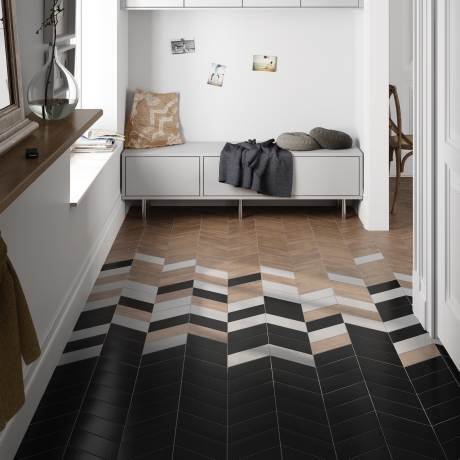
Porcelain
Porcelain refers to single-fired, dry-pressed tiles, that are available with a glazed or unglazed finish:
- Glazed porcelain has a low water absorption rate. The top surface is covered with a thick lacquer coating that can be singular in color or enhanced with a detailed pattern. The color of the tile body will vary depending on the type of clay used during production. Each piece is smooth in texture and has no blemishes unless added as a decorative element.
- Unglazed porcelain or through-body porcelain, features an extremely low water absorption rate. While each piece is fired only once, the tiles can be left in the kiln for an extended period of time to achieve a high-polished look. The top layer of each piece is left untreated, however, thanks to new inkjet technologies, collections can be etched with unique patterns and motifs.
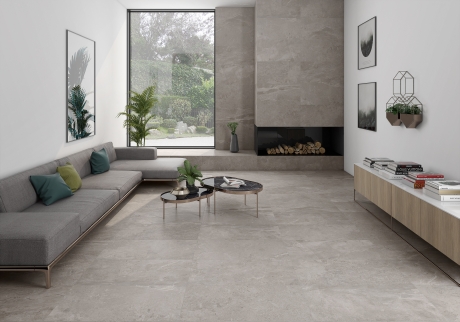
Catalonian Tile
Catalonian tile is the traditional name for extruded tiles that are often unglazed and deliver a medium to high water absorption rate. As the name implies, these tiles originated from and are primarily produced in Catalonia. Catalonian tiles have a dense body and are easy to maintain, and serve as a prime material to pave terraces, balconies, porches, and other outdoor areas. They are often combined with olambrillas, a small square stoneware tile, to craft intricate designs.
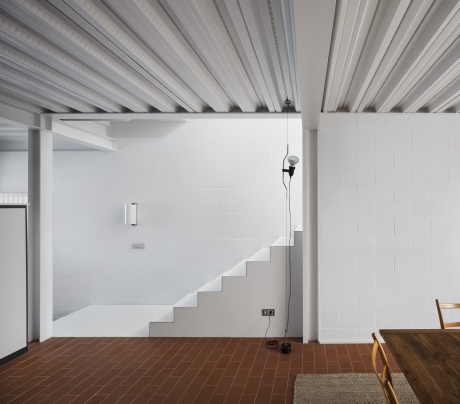
Rustic Stoneware
Not to be confused with traditional stoneware, rustic stoneware is the term used for extruded ceramic tiles that are generally unglazed and offer a low to medium absorption rate. Thanks to their sturdy characteristics, they are particularly suitable for facades and outdoor flooring in high-traffic public spaces.
The tile body ranges from ochre to dark brown and has a heterogeneous texture, with rough grains and other visible irregularities. The surfaces and edges are intentionally left uneven giving each piece a charming natural appearance.
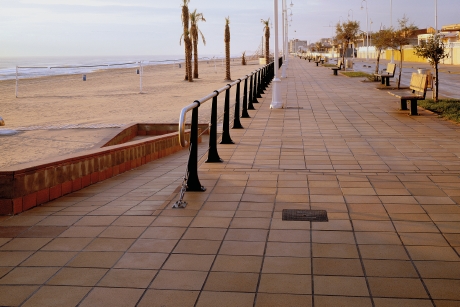
Mosaic Tile
The word mosaic refers only to the size of the tile, not to the material or design of a collection. Mosaic tiles are frequently produced on perforated paper sheets or plastic mesh in a 30x30cm or 30x60cm format for easy application. When manufactured on a paper surface, the installer will lay each sheet with the tile facing down, only peeling back the paper once the ceramic pieces have been set. When placed on mesh, the netting is laid first to keep the ceramic pieces in place.
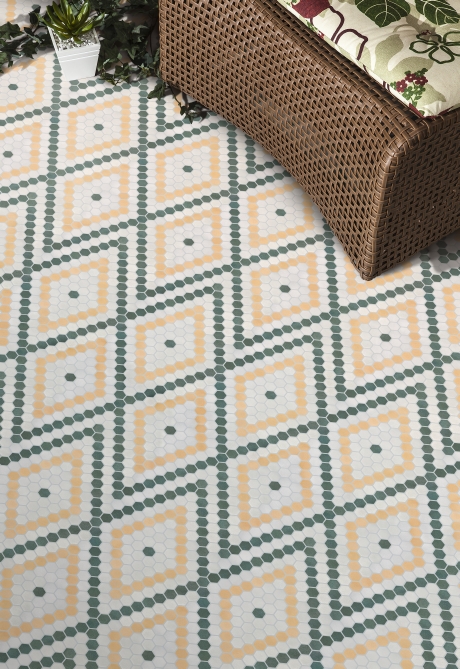
For even more projects, products and news from Tile of Spain be sure to follow us on Facebook, Instagram, Gorjeo Y Pinterest.

